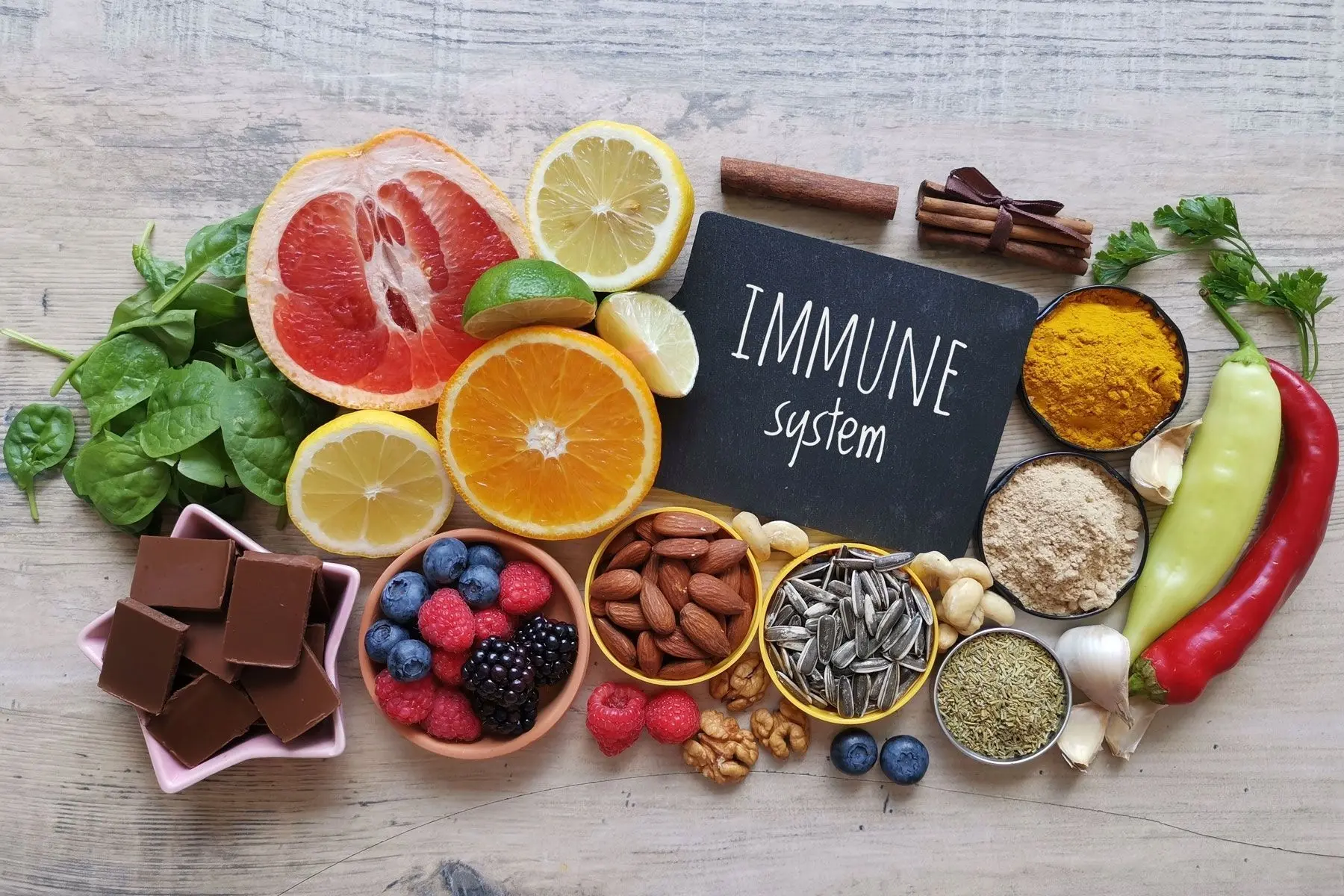
The gastrointestinal tract houses a vast portion of your immune system. Here, nutrients are absorbed or missed. The gut lining allows passage of essential vitamins, minerals, and amino acids. It also blocks harmful pathogens from entering circulation. Without balanced intake, this system falters. Microbial diversity thrives on dietary variety. Fiber feeds beneficial bacteria. Polyphenols reduce inflammation. A damaged gut weakens immunity before symptoms appear. Health starts where digestion begins.
Zinc enables immune cell communication and regulates inflammatory responses during infection
Zinc acts like a traffic controller for immune reactions. It helps cells send accurate signals. Without it, immune messages misfire. Infections linger longer. Wounds heal slower. Even mild deficiencies reduce white blood cell performance. Oysters and pumpkin seeds deliver high zinc content. Beans, nuts, and eggs support moderate intake. Supplements offer precision but require caution. Over-supplementation impairs copper levels. Zinc maintains the conversation your body needs during microbial attack.
Vitamin D modulates both innate and adaptive immune functions throughout the body
Vitamin D behaves more like a hormone than a traditional vitamin. It impacts over 1,000 genes. Immune cells carry vitamin D receptors. When activated, these cells destroy invaders more effectively. Low levels correlate with frequent infections. Sunlight remains the best source, though food helps. Fatty fish, egg yolks, and fortified dairy assist maintenance. Supplements fill winter gaps. Absorption improves with dietary fat. Vitamin D protects silently, consistently, and systemically.
Selenium acts as a shield against oxidative stress within immune cells
This trace mineral builds glutathione peroxidase, an internal antioxidant enzyme. It guards cell membranes from damage. Immune cells, especially T lymphocytes, rely on selenium to survive attacks. Brazil nuts offer exceptional content. Tuna, eggs, and sunflower seeds follow. Soil quality affects crop selenium levels. Deficiency can impair antibody formation. The margin between need and excess is narrow. One or two Brazil nuts daily suffice.
Vitamin C neutralizes harmful compounds and energizes phagocytes to engulf pathogens
This water-soluble vitamin scavenges free radicals during inflammation. It also strengthens cell walls against viral entry. Immune cells accumulate vitamin C rapidly during infection. Citrus fruits, bell peppers, kiwi, and parsley deliver rich sources. Cooking destroys some content. Raw consumption preserves potency. High-dose supplementation may reduce cold duration slightly. Absorption decreases above 500mg doses. Frequent intake is more effective than bulk consumption.
Iron helps white blood cells mature and carry out their microbial destruction role
Iron transports oxygen, but it also fuels immunity. Neutrophils need iron to function. Without enough, they fail to multiply. This weakens first-line defenses. Women of reproductive age risk deficiency most. Red meat, lentils, spinach, and fortified cereals provide iron. Pairing with vitamin C improves absorption. Tea, coffee, and calcium hinder uptake. Iron remains foundational but misunderstood. Both low and high levels carry immune consequences.
Omega-3 fatty acids reduce chronic inflammation and balance immune cell activity
These essential fats modulate immune sensitivity. They ease overreactions without blocking necessary defense. EPA and DHA, found in fish oil, change cellular membranes. This alters signal cascades during immune stress. Flaxseeds and walnuts offer ALA, a plant-based precursor. Conversion to active form is inefficient but still supportive. Omega-3s reduce cytokine storms and improve tissue repair. Consistent intake maintains anti-inflammatory tone across systems.
Probiotics replenish microbial diversity and strengthen mucosal immunity
Fermented foods supply live bacteria that colonize the digestive tract. Yogurt, kefir, kimchi, and sauerkraut build microbial networks. These microbes stimulate immune cells lining the gut wall. They teach tolerance and refine reactions. Probiotic strains differ in benefit. Lactobacillus and Bifidobacterium are best studied. Supplements offer precision when diet falls short. Probiotic impact grows with prebiotic fiber intake. Diversity in bacteria mirrors diversity in defense.
Polyphenols from plants control oxidative damage and improve immune regulation
These compounds act like cellular bodyguards. Found in berries, herbs, teas, and dark chocolate, polyphenols neutralize free radicals. They also reduce gene expression related to inflammation. Epigallocatechin in green tea boosts T cell production. Quercetin in apples enhances respiratory defenses. Polyphenols don’t act in isolation. They rely on gut flora for activation. Diets rich in color carry immune depth. Every pigment provides a chemical signal for protection.
Amino acids from protein help synthesize immune messengers and rebuild tissue
Proteins break into amino acids that build antibodies, enzymes, and repair molecules. Glutamine fuels lymphocytes. Arginine aids wound healing. Meat, eggs, beans, and dairy supply complete proteins. Plant sources require thoughtful combination. Infections raise protein demand. The immune system uses protein like currency during crisis. Without enough, defenses stall. Malnutrition impairs all lines of protection. Recovery requires building blocks, not just calories.
Magnesium coordinates vitamin activation and stabilizes immune messenger release
This mineral supports over 300 enzymatic reactions. It activates vitamin D and B group nutrients. Magnesium also calms inflammatory cytokines. It stabilizes cell membranes during stress. Leafy greens, seeds, beans, and whole grains offer reliable sources. Chronic deficiency increases immune hypersensitivity. Low levels intensify allergic response. Magnesium acts quietly but comprehensively. It links energy production with immune clarity.
Fiber from plants supports healthy digestion and immune readiness
Fiber feeds beneficial gut bacteria. It creates short-chain fatty acids like butyrate. These regulate inflammation and gut integrity. Soluble fiber slows digestion and controls blood sugar. Insoluble fiber supports motility. Lentils, oats, apples, and artichokes provide both types. Processed diets strip fiber and weaken microbial diversity. A fiber-rich plate multiplies immune signals. Each gram of fiber nurtures defenses silently.
Water supports lymph fluid movement and toxin clearance during immune activation
The lymphatic system needs hydration to transport immune cells. Water thins this fluid, enhancing flow. Dehydration slows immune travel. It also concentrates toxins. The immune system needs efficient movement. Fluids keep mucous membranes moist. This forms a barrier against pathogens. Herbal teas, broths, and water-rich fruits help maintain balance. Even mild dehydration disrupts function. Immunity needs lubrication to move.
Color variety in meals ensures spectrum coverage of immune-supportive compounds
Different colors signal different phytonutrients. Red tomatoes offer lycopene. Orange carrots provide beta-carotene. Green vegetables contain folate and chlorophyll. Purple foods offer anthocyanins. Eating by color creates functional diversity. A colorful plate builds layered defense. Each pigment adds a tool. Monochrome diets risk blind spots. Variety protects through complexity. Color isn’t decoration—it’s function.
Fermented foods maintain bacterial balance critical to immune vigilance
Beyond probiotics, fermentation changes food’s chemical structure. It increases vitamin content. Sauerkraut contains more vitamin K2 than raw cabbage. Kimchi carries live cultures and anti-inflammatory compounds. Fermented soy improves mineral absorption. These foods also lower gut pH. Pathogens struggle in acidic environments. Regular intake of fermented items supports defensive terrain. They don’t just add bacteria—they create resilience.
Sugar intake disrupts immune accuracy and increases inflammatory triggers
Excess sugar suppresses white blood cell activity. It also feeds yeast and harmful bacteria. Frequent sugar spikes lead to systemic inflammation. This creates distraction for immune responders. They chase harmless signals instead of real threats. Blood sugar regulation supports precision. Whole foods offer steady energy. Refined sugars scatter defense patterns. The immune system requires calm signaling, not chaos.
Alcohol suppresses immune cell production and impairs gut integrity
Even moderate drinking reduces lymphocyte formation. It also disrupts tight junctions in gut lining. This increases permeability—also known as “leaky gut.” Toxins enter circulation. The immune system shifts to damage control. Chronic alcohol use increases infection risk. It delays wound healing. Even occasional binge episodes affect immune memory. Reduction helps repair. Abstinence rebuilds. Immunity listens closely to alcohol intake.
Timing of meals influences rhythm of immune activity across the day
The immune system follows circadian rhythms. It peaks during daylight and slows at night. Eating late disrupts this cycle. Night meals increase inflammatory markers. Fasting periods allow repair. Intermittent fasting supports autophagy—a cleanup process vital to immunity. Meal timing isn’t only metabolic—it’s immunological. Consistency strengthens internal rhythm. Erratic eating weakens defenses. Aligning meals with daylight helps immunity stay on pace.
Overconsumption of processed foods limits micronutrient density and weakens immune efficiency
Caloric excess often means nutrient scarcity. Packaged foods carry additives, not essentials. These diets crowd out immune-supportive foods. Ultra-processed meals rarely include zinc, magnesium, or fiber. Long-term consumption alters gut flora. It promotes imbalance. Immune fatigue follows. Real foods reset the matrix. Density, not volume, fuels strength. The immune system feeds on presence, not packaging.
Herbal additions like turmeric and garlic enhance immune regulation through unique pathways
Curcumin in turmeric blocks nuclear factor kappa B—an inflammation trigger. Garlic enhances natural killer cell activity. These aren’t panaceas. They offer targeted effects. Ginger soothes mucosal membranes. Oregano oil disrupts bacterial biofilms. Herbs don’t replace nutrition. They amplify it. Used regularly, they tune immune rhythm. Each herb has a fingerprint. Together, they add nuance.
Nutritional balance is immune readiness expressed through daily eating decisions
No single food defends completely. It’s the pattern that matters. Diversity over intensity. Balance over extremes. Nutritional immunity isn’t static. It responds to inputs. What you eat today writes tomorrow’s defense. Immunity isn’t only medical—it’s edible. Each bite participates in protection.
